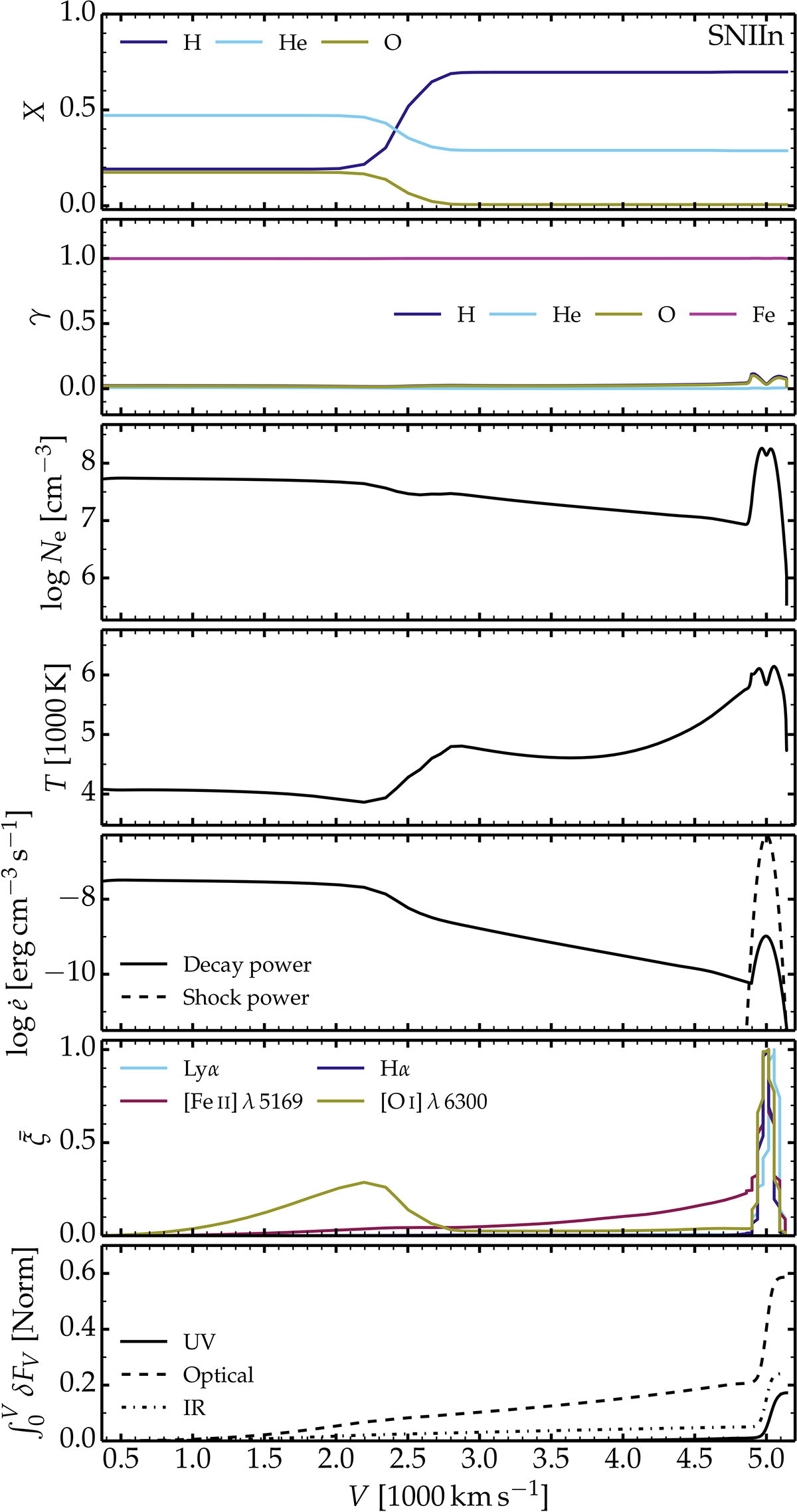Fig. C.1.

Download original image
Illustration of the ejecta and radiation properties versus velocity in the SN IIn model at 300 d after explosion and used for comparison to SN 1998S at 375 d in Section 5. The main feature of this model is the presence of a massive dense shell at 5000 km s−1 and powered by interaction (the interaction power absorbed is 2×1041 erg s−1 in this model). From top to bottom, we show the mass fractions and ionization state of H, He, O, and Fe (a value of zero corresponds to a neutral state, of one to once ionized etc), the free-electron density, the electron temperature, the absorbed powers from radioactive decay and ejecta/CSM interaction, some line emission measure denoted ![]() (ζ is defined such that
(ζ is defined such that ![]() gives the fractional line flux originating between radii a and b, and for better visibility we show its scaled value
gives the fractional line flux originating between radii a and b, and for better visibility we show its scaled value ![]() ; for details see Hillier 1987), and the outward integral of the flux in the ultraviolet, optical, and infrared.
; for details see Hillier 1987), and the outward integral of the flux in the ultraviolet, optical, and infrared.
Current usage metrics show cumulative count of Article Views (full-text article views including HTML views, PDF and ePub downloads, according to the available data) and Abstracts Views on Vision4Press platform.
Data correspond to usage on the plateform after 2015. The current usage metrics is available 48-96 hours after online publication and is updated daily on week days.
Initial download of the metrics may take a while.


